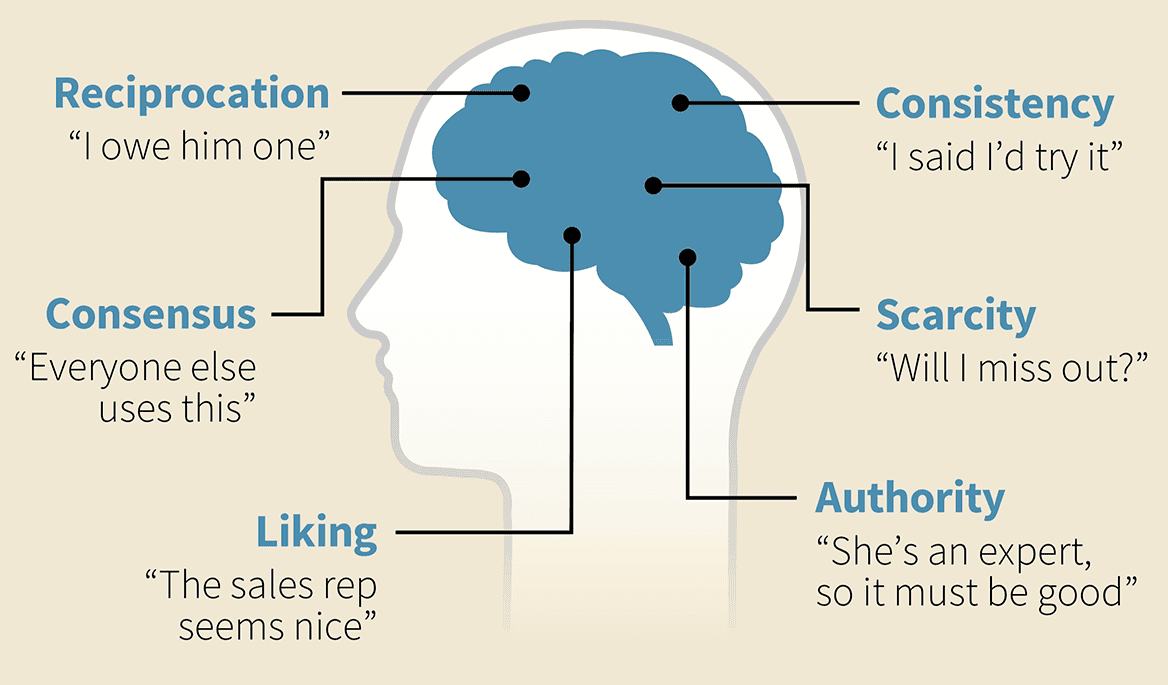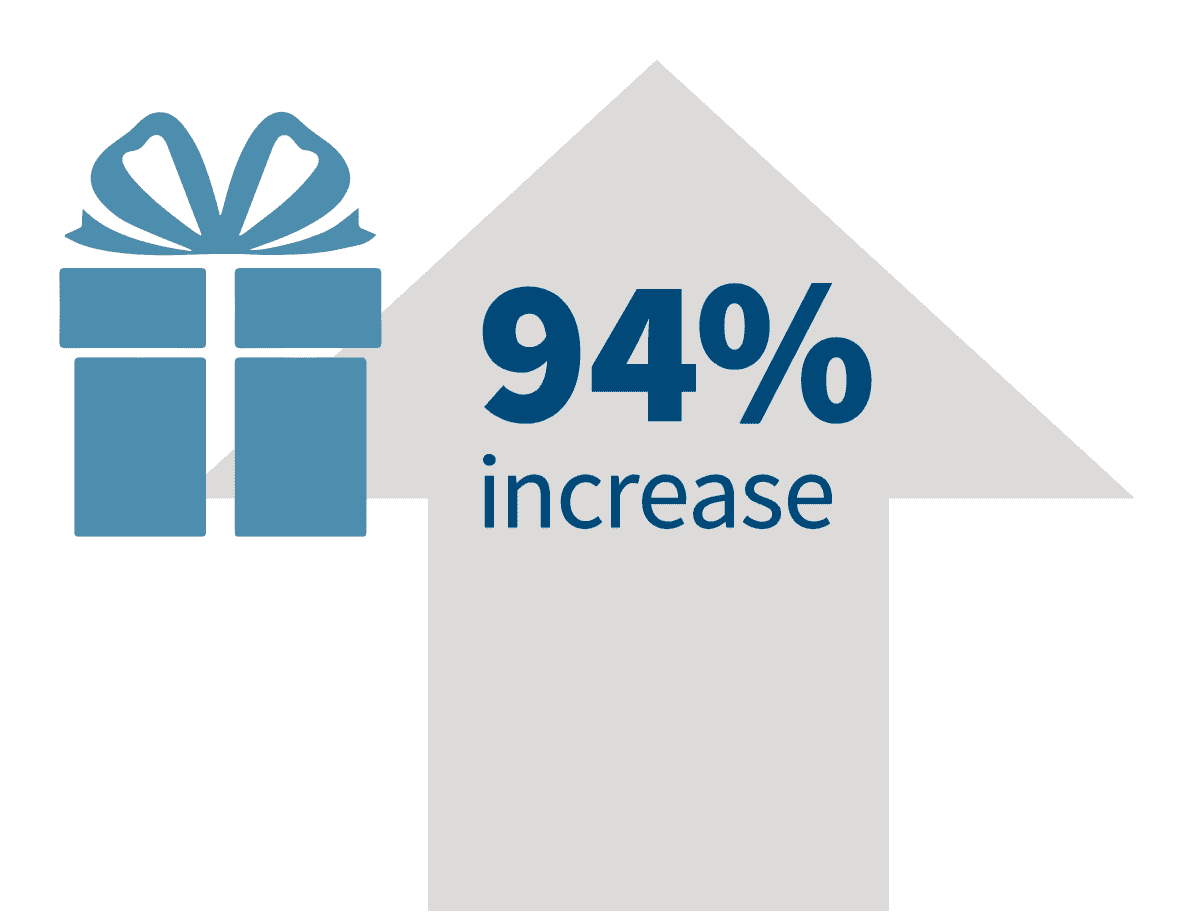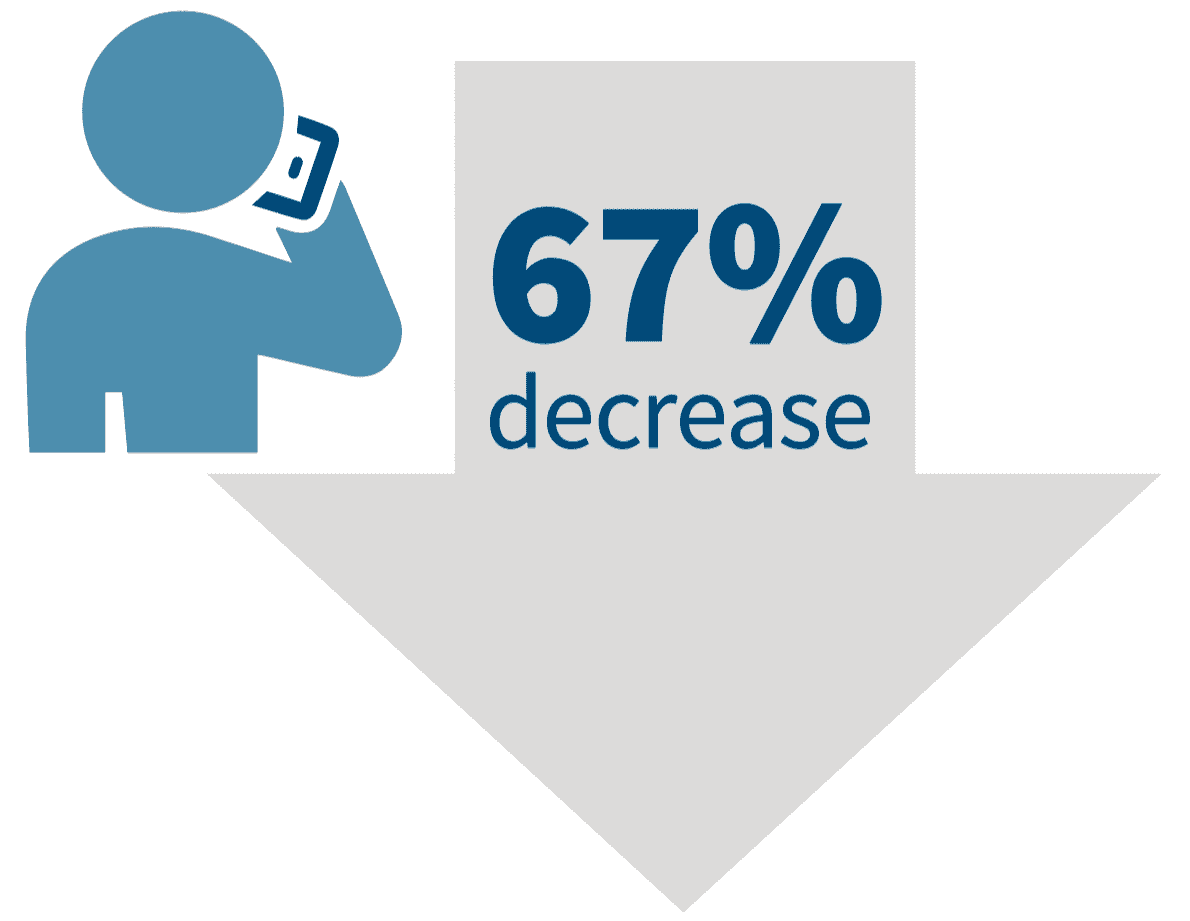Six psychological shortcuts to persuade your audiences
Psychologists studying persuasion have found people instinctively use certain universal shortcuts when making decisions. They concluded this is because people simply can’t analyze all the variables affecting those decisions. This seems especially true in today’s information-laden world.1
According to Dr. Robert Cialdini in his book, Influence: The Psychology of Persuasion, these shortcuts are basically stereotypes or rules of thumb found in all cultures. For instance, when comparing similar items, people assume the more expensive one must be the best. People buy from friends. People watch what others buy. People buy certain brands because it’s what their parents used. People buy what they’ve “always” bought.1
After years of study, Cialdini believes understanding six decision-making shortcuts—and taking advantage of them—can help marketers increase their persuasive power, and increase sales.
The six dimensions of persuasion

Social psychologists have identified six “voices” in people’s heads that influence decision making. These automatic behavior patterns are found in every society, and can be used to increase the persuasive power of sales and marketing efforts.1
Increase persuasion power by pre‑empting resistance
Persuasion can be difficult if targets are resistant to a message. But University of Arkansas social psychology professor Eric Knowles believes resistance can be minimized, sometimes by a direct approach that we’ll call “preemption.”2
Knowles says that introducing (or preempting) an objection reduces the target’s need to actively resist. So instead of shutting down, the target remains open to discussing the objection. For example, “This may sound kind of costly, but…” acknowledges a legitimate concern and creates an opportunity for persuasion.
Knowles’ studies also show minimizing resistance decreases the chance targets will experience future regret about their decision.2
EXECUTIVE SUMMARY
- Social psychologists have found people take shortcuts when making decisions.1
- Dr. Robert Cialdini has identified six universal shortcuts: Reciprocation, Consensus, Liking, Consistency, Scarcity and Authority.1
- Understanding these shortcuts can help you take advantage of peoples’ decision-making processes—and increase sales.1
- Furthermore, work at the University of Arkansas suggests reducing resistance before attempting to persuade may make an offer more effective.2
The six dimensions of persuasion
Reciprocation is a feeling of obligation to repay a kindness, says Cialdini. This powerful drive, found in all societies, often turns a “no” into a “yes,” even for requests that would normally be refused. But acting first is the key to receiving reciprocation. Free samples are the classic marketing tool addressing this drive.1
Consensus reassures people they’re making the right decision because other people have made the same decision. Because most people are imitators, marketing terms like “fastest-growing” or “#1 brand” can be highly persuasive, Cialdini found, especially when targets are unsure of themselves or uncertain about a situation.1
Liking seems simple—people prefer to say “yes” to someone they know and like. But liking is very complicated, says Cialdini. Attractive people are generally better liked. Similarity in dress, opinion, background or lifestyle can also be important, so understanding your target is key for successful marketing efforts. Familiarity can increase liking, and thus persuasiveness, so high advertising frequency (which ingrains familiarity) can help boost liking.1
Reciprocation in action

When the Disabled American Veterans included an unsolicited gift (address labels) in their donation requests, targets felt obligated to reciprocate—and response increased 94%.1
Consistency is a person’s desire to be (and appear) consistent with what he or she has already said or done. Cialdini’s work shows consistency is especially powerful after making a public commitment.1 So, a target who publicly agrees a product offers more benefits than a competitor may feel compelled to buy or recommend that product.
Scarcity makes people think hard-to-get items are better than readily available items. The fear of losing a hard-to-get item easily influences decisions, says Cialdini. He also found telling people what they stand to lose is more persuasive than telling them what they can gain.1 The message for marketers: Pain is more persuasive than opportunity. If you don’t use this technique, you’ll miss out!
Authority can be a powerful influence because society teaches from birth that obedience to authority is right and disobedience is wrong. But authorities—such as those used in testimonial ads—must be knowledgeable and trustworthy to achieve authority status, according to Cialdini.1
Consistency in action

When a Chicago restaurant asked patrons to agree to call if they needed to cancel a reservation, patrons demonstrated the power of consistency by keeping their word—and the no-show rate dropped 67%.1
Using persuasion in marketing
How can marketers make their efforts more persuasive? If there are commonly held objections in your audience, consider pre‑empting them to reduce resistance. Then consider how to address Cialdini’s six shortcuts with your prospects: Send free samples (reciprocation). Show them your client list (consensus). Make them more familiar with your company or sales force (liking). Ask them to agree to try your samples (consistency). Tell them what they’ll lose by not choosing your product (scarcity). And finally, use a trustworthy expert to promote your product (authority).1
1 Cialdini, R. (1993). Influence: The Psychology of Persuasion. New York, NY: W. Morrow and Company.
2 Persuasion. (2002, May 2). The Economist. Retrieved from https://www.economist.com/science-and-technology/2002/05/02/persuasion
